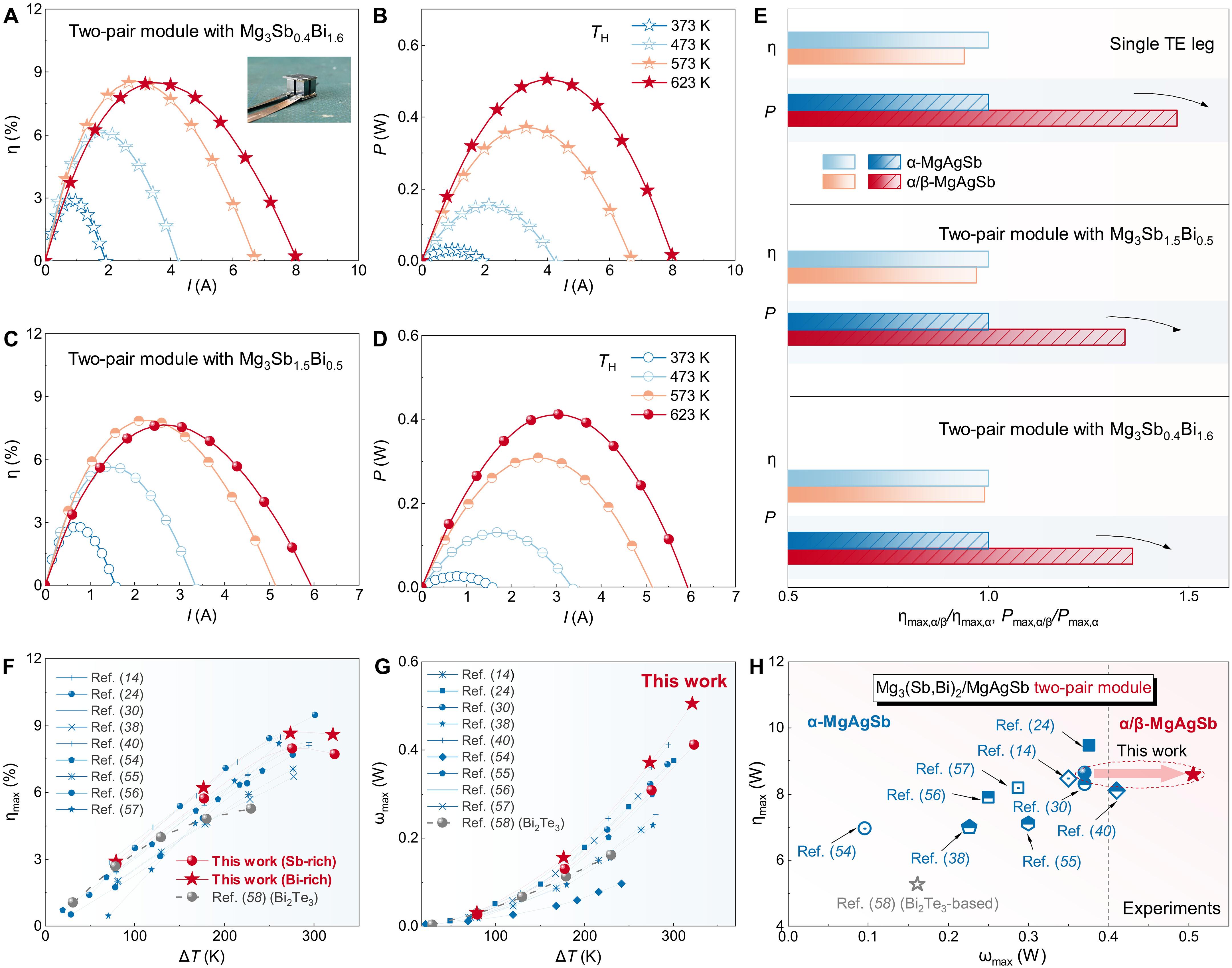半导体-金属过渡为高效MgAgSb热电器件提供动力
IF 12.5
1区 综合性期刊
Q1 MULTIDISCIPLINARY SCIENCES
引用次数: 0
摘要
由于金属的热电性能较差,在热电材料中半导体到金属的转变总是被避免。在这里,我们证明了α-to-β半导体-金属在MgAgSb中的转变实际上并不是有害的,而是可以有策略地利用来创建α/β-MgAgSb结,使输出功率提高150%,同时保持高转换效率。这种功率的增强在于半导体到金属转变引起的内阻显著降低,而内阻与尺寸变化无关。因此,通过模拟(实验),α/β-MgAgSb可以同时获得超过10%(9%)的最大转换效率和超过1 (0.9)W cm−2的最大功率密度,在相同条件下优于大多数p型材料。此外,结合α/β-MgAgSb和n型Mg3Sb0.6Bi1.4的双对热电模块实现了前所未有的功率密度,比现有的Mg3(Sb,Bi)2/MgAgSb双对系统有了显著的进步。这些发现突出了α/β-MgAgSb在热电应用方面的巨大潜力,并为大功率热电器件的设计提供了见解。本文章由计算机程序翻译,如有差异,请以英文原文为准。

Semiconductor-metal transition powers high-efficiency MgAgSb thermoelectrics
Because of the inferior thermoelectric performance of metals, the semiconductor-to-metal transition in thermoelectric materials is always avoided. Here, we demonstrate that α-to-β semiconductor-metal transition in MgAgSb is actually not detrimental but can be strategically exploited to create α/β-MgAgSb junction, enabling 150% enhancement in output power while maintaining high conversion efficiency. This power enhancement lies in the notably reduced internal resistance induced by semiconductor-to-metal transition, which is independent of dimensional changes. Consequently, α/β-MgAgSb can simultaneously achieve high maximum conversion efficiency exceeding 10% (9%) and maximum power density above 1 (0.9) W cm−2 by simulation (experiment), outperforming most p-type materials under identical conditions. In addition, a two-pair thermoelectric module combining α/β-MgAgSb with n-type Mg3Sb0.6Bi1.4 achieves an unprecedented power density, representing notable advancements over existing Mg3(Sb,Bi)2/MgAgSb two-pair system. These findings highlight the immense potential of α/β-MgAgSb for thermoelectric applications and provide insights into the design of high-power thermoelectrics.
求助全文
通过发布文献求助,成功后即可免费获取论文全文。
去求助
来源期刊

Science Advances
综合性期刊-综合性期刊
CiteScore
21.40
自引率
1.50%
发文量
1937
审稿时长
29 weeks
期刊介绍:
Science Advances, an open-access journal by AAAS, publishes impactful research in diverse scientific areas. It aims for fair, fast, and expert peer review, providing freely accessible research to readers. Led by distinguished scientists, the journal supports AAAS's mission by extending Science magazine's capacity to identify and promote significant advances. Evolving digital publishing technologies play a crucial role in advancing AAAS's global mission for science communication and benefitting humankind.
 求助内容:
求助内容: 应助结果提醒方式:
应助结果提醒方式:


